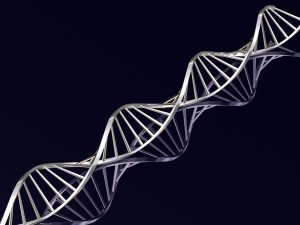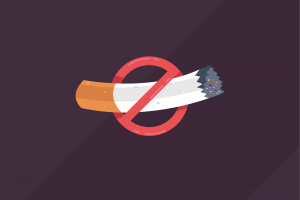Summary
Alopecia is a condition characterized by hair loss or baldness, which can affect not only the hair on the scalp but also hair on other parts of the body. Depending on the type, cause, and severity of the condition, alopecia may be temporary or permanent. In some cases, hair may grow back on its own, while in others, hair loss can be long-lasting.
The causes of alopecia vary widely. It can be hereditary or triggered by factors such as severe stress, pregnancy, sudden weight loss, dietary changes, surgery, or certain medical treatments. Health conditions like high fever, infections, thyroid disorders, cancer, autoimmune diseases like rheumatoid arthritis, and skin conditions such as ringworm can also contribute to hair loss. These triggers disrupt the normal growth cycle of hair follicles, leading to varying degrees of hair thinning or bald patches.
Alopecia often leads to visible bald patches on the scalp, thinning hair, or in some cases, complete loss of body hair, including eyebrows, eyelashes, and body hair in areas like the armpits. While alopecia does not typically affect physical health, it can impact self-confidence. For those seeking treatment, options include medications, hair transplants, and laser therapy, although these can be costly. Others may choose to accept their hair loss or wear wigs as an alternative solution.
Table of Contents
Symptoms of Alopecia
A person may be diagnosed with alopecia if they experience one or more of the following symptoms:
- Thinning hair on the scalp. Alopecia often begins with gradual thinning, where the hair on the scalp becomes noticeably less dense over time.
- Patchy bald spots on the scalp. Small, round bald patches may appear on the scalp, often resembling coin-sized spots that may grow larger or multiply.
- Hair loss on various parts of the body. In more extensive cases, alopecia can affect body hair, leading to hair loss on the eyebrows, eyelashes, nostrils, beard, ears, armpits, and even the pubic area.
- Scaling or flaking of the skin. In some forms of alopecia, particularly those linked to skin conditions, affected areas may show signs of dryness, scaling, or flaking.
These symptoms can vary in intensity, and while hair loss itself is typically not painful, it can have significant emotional effects. Recognizing the signs early can help in seeking proper diagnosis and treatment options, which may slow or manage the progression of alopecia.
Types of Alopecia
Alopecia has three main types:
- Alopecia areata. This is the most common type, characterized by patchy hair loss on the scalp, creating small bald spots. In addition to the scalp, alopecia areata can also cause hair loss in other areas, such as the eyebrows, eyelashes, nostrils, beard, armpits, and even around the ears.
- Alopecia totalis. In this form of alopecia, the individual loses all hair on the scalp, resulting in complete baldness. Alopecia totalis is more advanced than alopecia areata and is less common.
- Alopecia universalis. This rare form of alopecia leads to complete hair loss across the entire body, affecting the scalp, face, and all body hair, including eyelashes and eyebrows. Alopecia universalis is the rarest and most severe type of alopecia.
Each type of alopecia differs in severity and scope of hair loss. While alopecia areata is often temporary, alopecia totalis and universalis may require more intensive treatment and are less likely to reverse spontaneously.
Diagnostic Procedures for Alopecia
Diagnosing alopecia requires a combination of physical examination, medical history, and specific tests to determine the type and cause of hair loss. Since alopecia can result from various factors, a proper diagnosis helps guide effective treatment. Here are the common diagnostic procedures for alopecia:
- Physical examination and medical history review. A doctor will begin by examining the scalp and any affected areas of the body. They will also ask about the patient’s medical history, family history of hair loss, recent lifestyle changes, stress levels, and overall health to identify any potential contributing factors.
- Pull test. In this simple procedure, a doctor gently pulls on a small section of hair to see how many strands come out. This test helps assess the severity of hair loss and whether it is an active process. Excessive hair shedding suggests an underlying condition affecting the hair growth cycle.
- Scalp biopsy. In cases where the cause of hair loss is unclear, a small sample of scalp tissue may be taken for a biopsy. This allows for examination under a microscope to determine whether the hair loss is due to infection, autoimmune conditions, or other issues affecting the hair follicles.
- Blood tests. Blood tests are often conducted to check for underlying health conditions that may contribute to hair loss, such as thyroid disorders, iron deficiency anemia, hormonal imbalances, and autoimmune diseases. Identifying these conditions can help address the root cause of alopecia.
- Hormone level testing. Hormone levels may be assessed, especially in cases of suspected hormonal alopecia or if symptoms suggest conditions like polycystic ovary syndrome (PCOS) or menopause-related hair loss. Measuring levels of hormones such as androgens can help clarify the cause of hair thinning.
- Dermoscopy. A dermoscope is a specialized tool that allows doctors to examine the scalp closely, providing a magnified view of hair follicles, scalp skin, and hair shafts. This can reveal patterns and signs indicative of specific types of alopecia, such as miniaturized follicles in androgenetic alopecia.
Each diagnostic procedure provides valuable information, helping the doctor pinpoint the exact cause of alopecia and recommend an appropriate treatment plan. Early and accurate diagnosis is essential for managing hair loss effectively and optimizing the chances of hair regrowth where possible.
Complications of Untreated Alopecia
Untreated alopecia can lead to several complications, both physical and emotional, depending on the type and severity of hair loss. While alopecia itself is generally not life-threatening, the following complications can affect the quality of life for those experiencing it:
- Increased susceptibility to skin damage. Areas of the scalp or body that lose hair may become more vulnerable to environmental factors, such as sunburn or injury. Hair provides a natural protective layer, so when it’s lost, the skin is more exposed to UV rays, temperature changes, and physical damage, which may increase the risk of skin irritation or skin cancer over time.
- Eye and nasal irritation. Hair, particularly eyebrows and eyelashes, serves to protect the eyes and nasal passages from dust, dirt, and other particles. Loss of these hairs can lead to frequent eye irritation, dryness, and a higher risk of eye infections. Similarly, nasal hair loss can cause increased sensitivity to allergens and airborne irritants.
- Emotional and psychological impact. Alopecia can have a significant effect on self-esteem, leading to issues such as anxiety, depression, and social withdrawal. Individuals may experience distress due to the changes in their appearance, and untreated alopecia can further impact daily life and personal relationships.
- Scarring (in certain types of alopecia). In some forms of alopecia, such as cicatricial alopecia (scarring alopecia), hair loss damages the follicles permanently, leading to scarring that prevents future hair regrowth in the affected areas. Early treatment is critical to avoid irreversible scarring and permanent hair loss.
- Increased risk of infections. In cases where alopecia causes open sores or exposed scalp, there is a heightened risk of infection, especially when the scalp is frequently irritated. Infections can worsen hair loss and lead to further complications if not managed promptly.
Addressing alopecia early on can help mitigate these complications, prevent permanent damage, and improve the quality of life. Seeking medical advice and treatment options can offer support and, in many cases, help manage symptoms effectively.
Causes of Alopecia

Alopecia, or hair loss, results from specific changes or disruptions in the hair growth cycle. Here are some of the direct and primary causes of alopecia:
- Genetic mutations affecting hair follicles. Hereditary patterns, known as androgenetic alopecia, are caused by genetic changes that affect the sensitivity of hair follicles to hormones. This leads to miniaturization of the hair follicles, which shortens the growth phase of the hair cycle and results in thinner, shorter hairs until the follicle stops producing hair altogether.
- Hormonal imbalances. Fluctuations in hormone levels, especially androgens, can directly affect the hair follicles. For instance, during pregnancy, childbirth, or menopause, or with thyroid dysfunction, shifts in hormone levels can disrupt the natural hair growth cycle, leading to shedding and thinning. Hormonal changes influence how long hair remains in its growth phase, leading to telogen effluvium, where hair prematurely enters the shedding phase.
- Autoimmune response attacking hair follicles. In conditions like alopecia areata, the immune system mistakenly attacks hair follicles, leading to sudden hair loss in patches. The immune response disrupts normal hair follicle function and can halt hair growth, sometimes causing lasting damage to the follicle.
- Direct scalp infections or diseases affecting follicles. Certain scalp infections, such as fungal infections (like ringworm) and bacterial infections, can directly damage hair follicles, causing inflammation and sometimes scarring. Infections disrupt the follicle environment, leading to localized hair loss that may become permanent if untreated.
- Physical damage to hair follicles. Prolonged traction from tight hairstyles or repetitive hair treatments that involve harsh chemicals can cause trauma to the hair follicles. This repeated strain or chemical exposure damages the follicle structure, leading to traction alopecia, where hair loss can become permanent if the follicle is extensively damaged.
- Nutritional deficiencies impacting follicle health. While usually linked to dietary issues, direct deficiencies in essential nutrients such as iron, zinc, and B vitamins affect the production and maintenance of hair cells. Follicles rely on specific nutrients for healthy hair growth, and without these, the follicles weaken, leading to hair loss and stunted regrowth.
Identifying the direct causes of alopecia is crucial for effective management and treatment, as addressing the root issues can help prevent further hair loss and support healthy regrowth.
Prevention of Alopecia

To reduce the risk of alopecia and maintain healthy, thick hair, consider the following preventive practices. These steps can help protect hair from damage and encourage healthier growth:
- Use a wide-tooth comb. Wide-tooth combs help minimize hair breakage and reduce the amount of hair pulled out during combing. Even with a wide-tooth comb, it’s best to detangle hair gently to prevent strain on the follicles.
- Avoid hair straightening or excessive heat styling. High temperatures from straightening irons and other heat styling tools can weaken hair strands, causing them to become brittle and more prone to breakage. Heat styling can also slow down the growth of new hair, as excessive heat damages the hair follicles over time.
- Don’t tie hair too tightly. Tight hairstyles, such as ponytails or buns, can cause traction on the hair follicles, leading to hair loss known as traction alopecia. If tying the hair back, try to keep it loose to reduce tension on the scalp.
- Wear a hat or use sun protection. When outdoors, especially under strong sunlight, wearing a hat or using an umbrella can protect hair from harmful UV rays. Prolonged exposure to UV rays can weaken hair and damage its structure.
- Avoid smoking. Studies show that smoking can contribute to hair thinning. The chemicals in cigarettes restrict blood flow and reduce nutrient absorption, leading to weaker hair and increased hair loss.
Implementing these preventive measures can help lower the risk of alopecia, supporting overall hair health and resilience. Proper hair care and avoiding harsh practices are key to maintaining thick and healthy hair over time.
Risk Factors for Alopecia
Anyone can experience alopecia, but certain factors increase the likelihood of developing the condition. Here are some of the primary risk factors:
- Family history of alopecia. As previously mentioned, alopecia can be hereditary. If immediate family members, such as parents, don’t have alopecia but other relatives do, there’s still a chance that one may inherit a predisposition to hair loss.
- Aging. Hair naturally thins as people get older because the body’s production of new hair slows down. Additionally, age-related health issues can further accelerate or worsen hair loss.
- High-stress professions. Individuals in demanding jobs are at greater risk for alopecia due to chronic stress. High stress can disrupt the hair growth cycle, and stressed individuals may also neglect balanced nutrition, impacting hair health.
- Eating disorders. People with conditions like anorexia or bulimia have an increased risk of hair loss. Nutritional deficiencies caused by insufficient food intake mean the hair follicles don’t receive the essential nutrients they need, leading to weakened or stunted hair growth.
Recognizing these risk factors can help individuals take preventive steps and make lifestyle changes to support healthier hair growth and reduce the risk of alopecia.
Alopecia FAQs
Alopecia, commonly known as hair loss, is a condition that can affect the scalp and other areas of the body. While it’s often associated with genetics, alopecia can have a range of causes, from hormonal changes and autoimmune disorders to stress and nutritional deficiencies. Here are some frequently asked questions to help you better understand alopecia, its causes, symptoms, and treatment options.
- What is alopecia?
Alopecia is a condition that leads to hair loss, which can occur on the scalp, face, or even the entire body. It can vary in severity from small bald patches to complete hair loss, depending on the type and cause. - What are the common types of alopecia?
There are three primary types: Alopecia areata, which causes patchy bald spots on the scalp or body; Alopecia totalis, resulting in complete hair loss on the scalp; and Alopecia universalis, which leads to total hair loss across the entire body. - What causes alopecia?
Alopecia can be caused by various factors, including genetics, hormonal imbalances, autoimmune responses, scalp infections, physical or emotional trauma, and nutritional deficiencies. Each type of alopecia has specific underlying causes that may vary from person to person. - Is alopecia permanent?
It depends on the type and underlying cause. Some forms, like androgenetic alopecia, are usually permanent, while others, such as alopecia areata, may allow for hair regrowth either naturally or with treatment. - Can stress cause alopecia?
Yes, stress can trigger hair loss, especially in forms like telogen effluvium, where stress causes hair follicles to prematurely enter the shedding phase. Managing stress through relaxation techniques may help reduce its impact on hair health. - Is there a cure for alopecia?
While there is no universal cure for alopecia, many treatment options are available to manage symptoms. These include medications, lifestyle adjustments, and, in some cases, hair transplants or therapies like laser treatment. - Can diet impact alopecia?
Yes, nutritional deficiencies, particularly in iron, zinc, and B vitamins, can contribute to hair loss. A balanced diet rich in these nutrients can support healthy hair growth and prevent nutrient-related hair loss. - Are there any effective treatments for alopecia?
Treatment options depend on the type and severity of alopecia. Common treatments include topical medications like minoxidil, corticosteroid injections, immunotherapy, and oral medications. Consulting a doctor is essential for determining the best approach. - Who is most at risk for alopecia?
While alopecia can affect anyone, certain risk factors, such as family history, aging, high-stress lifestyles, and specific health conditions, can increase the likelihood of developing hair loss. - When should I see a doctor about alopecia?
If you notice sudden or excessive hair loss, bald patches, or other changes in your hair, it’s best to consult a healthcare provider. Early diagnosis can help manage symptoms and explore effective treatments.


